Some of the most beautiful work of this craftsman, and many others, are in this book “Liège Gunmakers through their Work. 1800 - 1950”.
For more detail see: LIEGE GUNMAKERS
Jacquemart
JACQUEMART-PIROTTE Jos. 1908/1926.
JACQUEMART Vve et ses enfants 1926/1943.
JACQUEMART Ateliers association de fait 1943/1952.
JACQUEMART Ateliers S.A. 1952/1966.
JACQUEMART, Eugène 165 rue Petite Voie Herstal 1966/ ...
JACQUEMART by Hogg
Jules Jacquemart, Liege, Belgium.
Jacquemart Ateliers Herstal
Here is a
shotgun juxtaposed with external hammers, back plates, key of opening between
the hammers, of manufacture of Liège and charged with American history.
The
barrels seem very short and look more like a "coach gun" to me.
Markings
:
Peron:
inspection since 1853;
crowned
ELG: acceptance since 1893
12-65 in
omega lying: nominal gauge and length of the casing, since 1924
Y under
star: countermark of a controller, since 1877
EL:
provisional test, since 1852
18. 3:
gauge in mm
Choke 16.
2: choke barrel
D
crowned: more than likely the gunner Delcour
HJA: it
could be the Workshops Jacquemart in Herstal, but it is not sure at all because
they were active between 1943 and 1952 then under another denomination until
1966. However, as we will see later, this does not fit the story of the Miller
Brothers 101 Ranch and its great show in which Buffalo Bill participated.
But
first, let's locate Ponca City, in northern Oklahoma:
https://en.wikipedia.org/wiki/Ponca_City,_Oklahoma
The
history of this city is intimately linked to the Miller Brothers and their huge
ranch and also their 101 Ranch Wild West Show very active between 1907 and 1927:
https://en.wikipedia.org/wiki/Miller_Brothers_101_Ranch
In any
case, this rifle, which has suffered the outrages of time, must date from this
period and even more precisely from the end since it is after 1924. Unless it
belonged to a member of the show who "embellished" his rifle as a souvenir.
What is
in any case very surprising is the absence of an annals date (at least as seen
from here.....): now, we know that the Belgian proofhouse introduced the annals
letters in 1922.
GP with the help of PHL and AD.
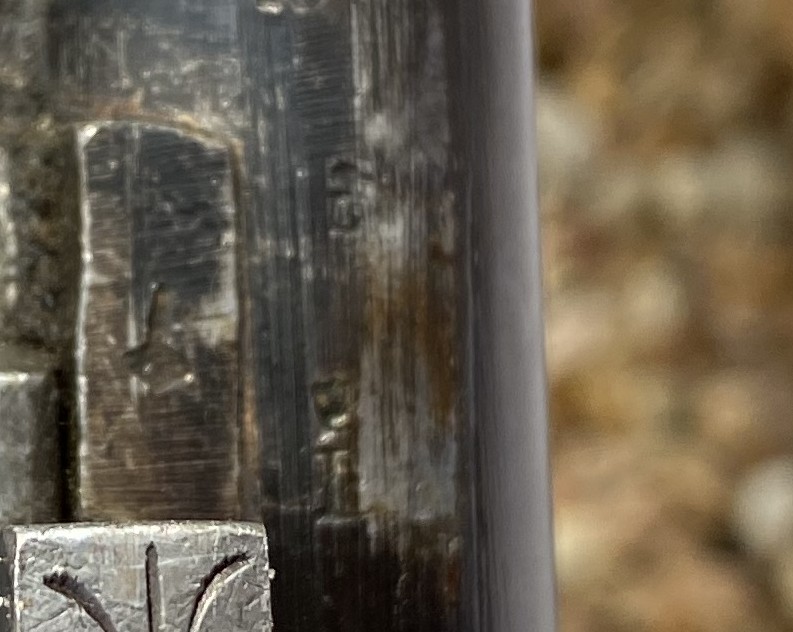
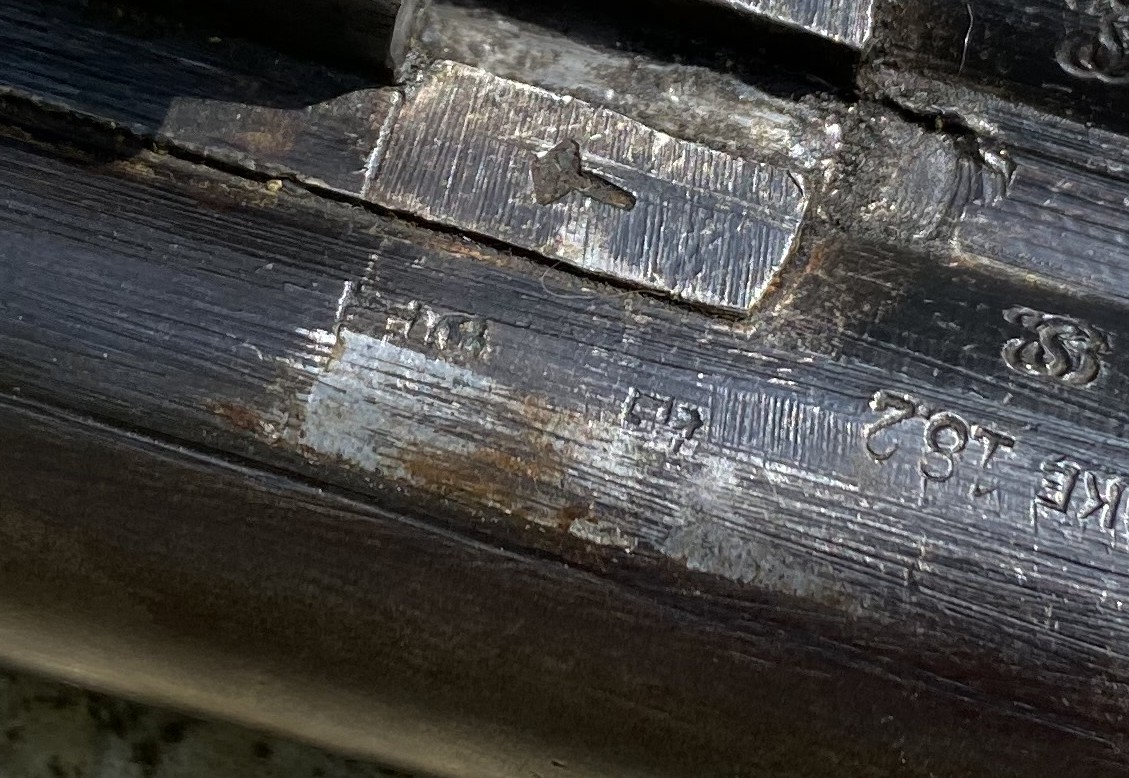
The Monobloc.
Jacquemart began the production of this pistol before the First World War; so that it appears, it died little after and the production was continued by the widow and ceased in 1914; since this time one did not intend any more to speak about the company; although Pollard quoted the gun in its book of 1920, nothing proves that it spoke about a model after war.
The weapon of Jacquemart was an automatic of 6,35 mm to not fixed cylinder head, of original design. The carcass and the box of cylinder head formed a single part with the gun, and the external surface of the box of cylinder head presented grooves similar to the contemporary models of Pieper. At the interior of the box of cylinder head was the mobile cylinder head whose grooved wings covered by slits practised in the sides of the box of cylinder head, in order to be able to seize the cylinder head and to draw it behind for the loading. The higher part of the cylinder head formed a protuberant pipe which contained the spring recuperator and which penetrated in a tubular housing placed in the higher part of the carcass, above the gun. A stem-guide passed through this part of the cylinder head and was screwed in the frontal part of the carcass; when the cylinder head moved back, the tubular part compressed the spring recuperator around the fixed stem. The charger placed 6 blows and the gun had a length of 2 inches. The box of cylinder head was marked "the Automatic Monobloc Patented Gun", and the handles carried monogram "JJ" to the flowered style.
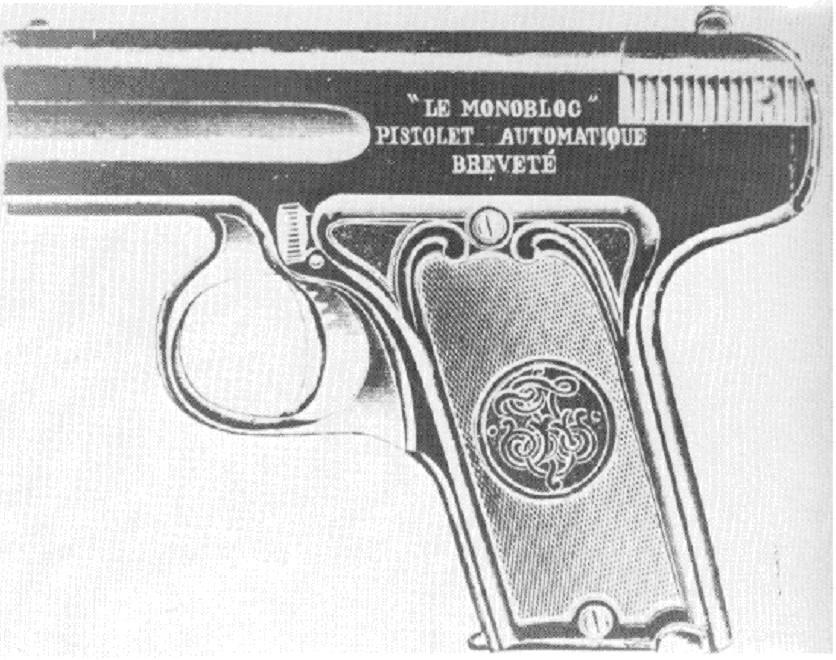
Joseph Jacquemart
The weapon
This automatic pistol of gauge 6,35 mm is a realization of Joseph JACQUEMART.
The carcass, the barrel and the slide are of only one part what justifies “Monobloc” name.
The magazine can contain six cartridges of 6,35 mm to central percussion.
The weapon measures 116 mm and the barrel 53 mm.
The weapon is equipped with the safety placed on the right side in front of the trigger guard, it is mark S of sureté (safety).
Punches
This weapon carries the punches of the proofhouse of Liege, that is to say:
- ELG on star in an oval under crown: acceptance post 1893.
- R under crown: rifled bore of use of 1894 to 1968.
- AT under star: countermark of the controller post 1877.
- PV under a stylized lion: test with the powder without smoke, of use of 1898 to 1968.
Marks
It also carries on the breech the mark “the MONOBLOC” Pistolet automatique Breveté which is the trade mark by Jacquemart the 20.07.1911.
The logo of handle represents letters JJ interlaced of Jacquemart Joseph.
The manufacturer
JACQUEMART-PIROTTE, Joseph was industrial and manufacturer of weapons quay of Channel 28 with HERSTAL. It was registered with the registers of the proofhouse of Liege of 1908 to 1926.
From 1903 to 1911, it deposited three patents for a rifle hammerless (with J.J.Maréchal}, an ejector of rifle and the automatic pistol MONOBLOC.
After his death, the company was taken again by its widow Mde PIROTTE Veuve Jacquemart. This one deposited a new trademark “SPORTEX” the 12.05.1936.
Publicity
In appendix two publicities of this company.
GG
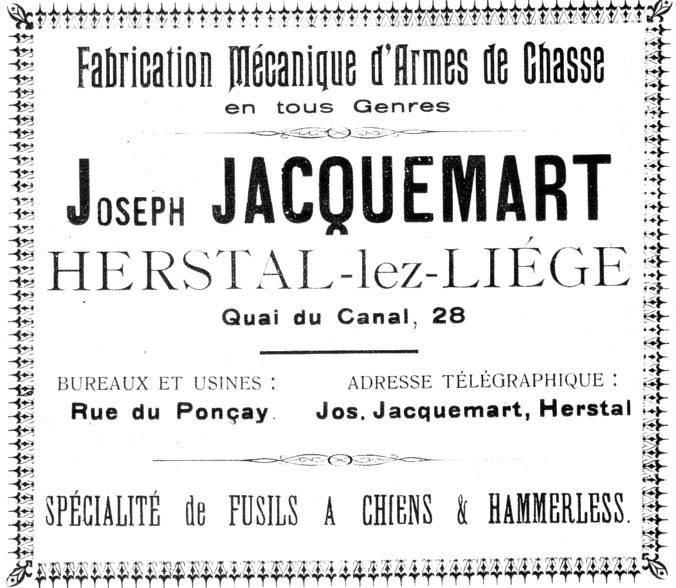
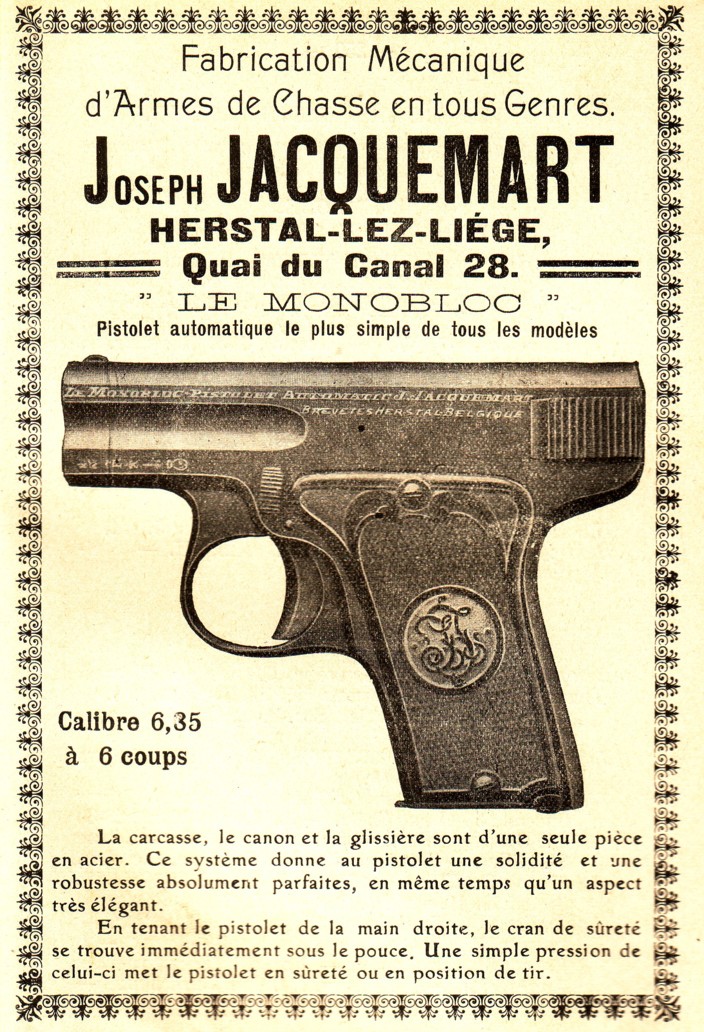
JACQUEMART
The weapon
It is about a shotgun to juxtaposed guns and locks hammerless.
Markings
Proof house of Liège
Spangled ELG in a crowned oval: acceptance - use of 1893 to 1968.
D spangled: countermark of the controller - use of 1877 to 1968.
PV surmounted of a stylized lion: test modern powders - use of 1898 to 1968.
Other marks
AJH would be the mark of workshop JACQUEMART with HERSTAL about 1948.
GG